Don't Burn That Straw In The Fields
By Marianne de Nazareth
26 November, 2015
Countercurrents.org
Year after year, we go home to our little village in Goa, Pilerne, in Bardez and have to drive through the rice fields, before we reach the homestead. The rice is always in different stages, either planting or ripening and sometimes we are lucky to be present for the harvest end October. When we were kids the harvest was manually done and all the workers from the homestead, had to leave their household chores and go out from early morning, to late evening, to help the contract workers manually harvest the crop.
In the last few years, massive combine harvesters have taken over the job of harvesting and the villagers are happy to see their crops harvested and collected in a matter of a few hours. However we have noticed that the residue is taller and bigger than the residue left with manual harvesting. This is considered a problem in some states and because of the 'problem' , farmers are taking to burning the residue if there are no cattle to manually 'mow' down the straw. However it was in ICIMOD (International Centre for Integrated Mountain Development) that the negative effects of burning of agricultural waste and its further transboundary impacts was brought home to us by Anita Karki (Gender and Energy Development Specialist, ICIMOD)
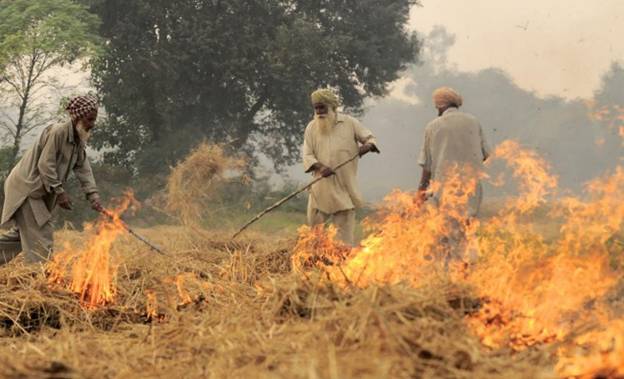
Farmers burn straw in the Punjab pic_by Neil Palmer
The reason for agricultural burning
According to research by ICIMOD, almost 90% of field waste is burnt these days in India, Those who use combine harvesters burn the remains of the crop, as the combine harvester leaves longer stalks of straw behind. Those who are in hurry to plant the second crop of wheat after rice burn their residue Burning is usually done in the late afternoon and smoulders well into the evening. This is because it saves having to employ labour and funds to manually clear it.
It is believed by the farmers that:
Burnt residue is a good fertilizer for the next harvest, but scientists have proved that a fallacy. Burning the stalks reduces it to ashes which has no nutritive value for the soil, which if the stalks were left to mulch naturally and become organic fertilizer.
It kills the pests which proliferate in the fields, like any fire does. .And it drives away other insects and mosquitoes. This is helpful for the farmer but is not good for the soil.
Combine Harvesters
The combine harvester is used almost for 6-7 hours per day and uses 21 liters of diesel for agricultural work before winter sets in.
The charges to hire them is about 1000 rupees per hour
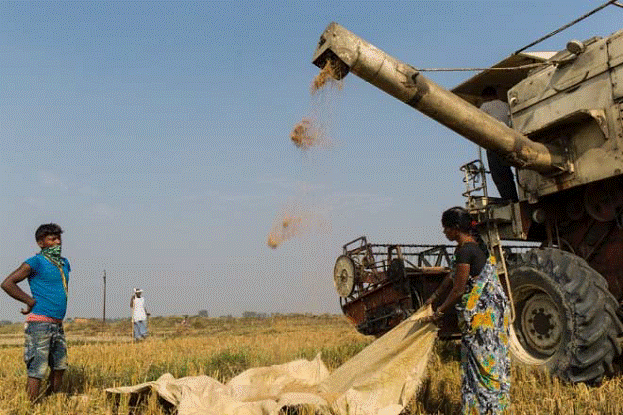
Picture courtesy ICIMOD
Most farmers today prefer to use the combine harvester. This is because labour is expensive due to migration to the city as manual labourers. So, mechanization and agricultural burning has become the norm in most states. The migration of young people as labourers results in need for mechanization which has taken over our fields. Plus the remittance money received makes it possible to buy or rent machines rather than manually harvest the crop.
Keeping livestock to till and manure the fields is becoming a less desired requirement by farmers, thus use of residues as food for cattle which was done in the past is becoming obsolete. So, instead of manual harvesting, most farmers prefer combine harvesting which for them is economical and less expensive.
The remains that combine harvester leaves behind cannot be fed to animals as the smell of diesel remains on the stalks, which the animals dont like. Plus maybe the left over stalk is not soft and palatable, like the upper part of the rice, say researchers..
Case study of the Punjab
In the Punjab, there is 2.8 million ha under cultivation of rice and wheat rotation. This has changed from the '60's when cotton was the cultivated crop. Now it is considered the 'bread basket ' of India. However with the change in crop being planted, the timelines of different field operations is a key element in the success and yield of a crop. The farmers here find managing heavy rice stubble is a major problem as they are 21 mt in height. This takes a lot of time and money to remove so that is why burning is resorted to.
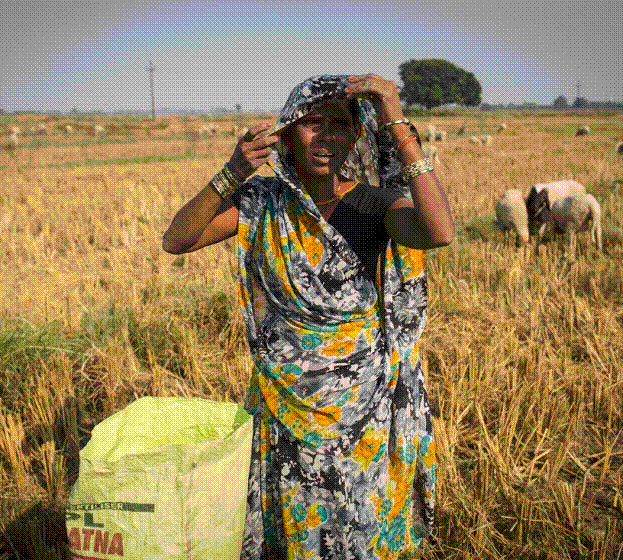
Burning of stubble is a rapid and cheap option. But do the farmers realise the down side to doing that? pic ICIMOD
Burning agricultural waste causes serious threat to:
Soil health -- is affected with burning instead of allowing the stubble to mulch with the soil and give it organic fertilizer, the burnt straw is a useless additive to the soil fertility.
Environment - Smoke from burning causes Black Carbon which is a product of incomplete combustion. According to ICIMOD, there are indications in the Hindukush Himalaya region ( HKH) that absorbing aerosols containing large amounts of black carbon are playing a significant role in changing of the regions climate.
Human health -- Reducing Black Carbon aerosols would both reduce climte impact and benefit human health. The ways to reduce this are to use alternative fuels for cooking and reduce open burning of waste, through improved waste disposal methods.
Animal health is affected like human health with the quantum of black carbon in the air they breathe.
Biodiversity like insects, small mammals and birds that live in the fields are lost with burning.
Effects on plant nutrients and environment
Research from ICIMOD shows that:
One ton of paddy straw contains: 5.5 kg N (as organic) 2.3 kg P2O5(as organic) 25 kg K2O (readily available) 1.2 kg S (as organic) 50-70% micronutrients absorbed by rice 400 kg of Carbon
It is estimated that in Punjab alone, about 125 thousand tones of N and S in the paddy residues is lost during open burning, costing Rs. 2000 million per annum at the prevailing prices
One ton of crop residue on burning releases: CO2=1515 kg CO=92 kg NO=3.83 kg
SO2=0.4 kg CH4=2.7 kg Non methane (volatile organic compounds)=15.7 kg
There are many mitigation options available according to the scientists instead of burning the straw:
1. Framers can hire what is called a Happy Seeder. A Happy Seeder is one of the unique techniques which a Happy Seeder is used for sowing wheat, without any burning of rice residue. This technology is eco friendly cares for the health of soil as well as it also saves water. The straw is burnt in order to sow wheat on time. But the burning of Rice residue decreases the soil fertility and is harmful for human beings, animals and the environment. The Happy Seeder sows wheat in rice residue, without burning rice residue.
2. Baler -- Today farmers can hire a baler which is attached to the tractor. This compressess the 'cut-straw' into compact bales that is easy to handle, transport, and store.
3. Paddy Straw Chopper is another modern machine for farmers with residual rice or wheat straw. These machines are used for shredding the paddy straw in order to prepare feed for animals. They are supplied extensively to farmers and these shredding machines shred the straw efficiently for the farmer.
4. Paddy straw based Biogas plants : As Rice straw is a major agricultural waste product in Asia with an estimated production of approx 700 million tons/year according to research, cost of this waste biomass resource is not utilized or recycled in a sustainable manner. This process is especially suited to enhance energy production in rural communities where small manure based biogas plants are already in operation. This could lead to a substantial increase in construction of small biogas digesters in rice producing regions thus greatly reducing the demand for fossil fuels and creating possibilities for new jobs and small enterprises. Consequently this will allow for a substantial increase in energy production and standard of living in rural areas in a climate friendly way.
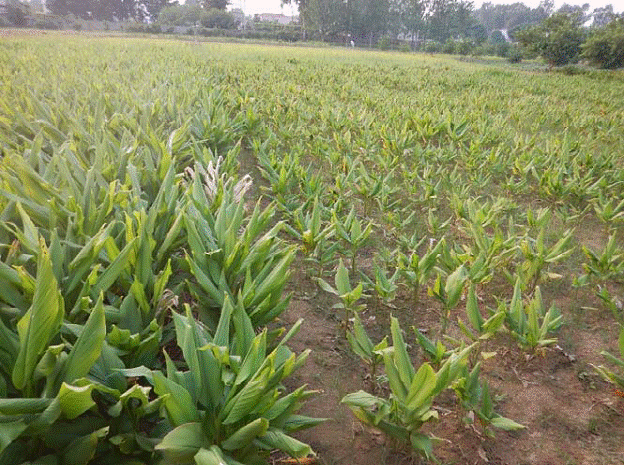
Difference in two yields (with and without Mulching) pic: ICIMOD
5. Preparation of Compost from Paddy Straw : Composting converts crop residues into a better organic fertilizer. Although organic fertilizers, including rice compost, are often low in major nutrients such as nitrogen (N) and phosphorus (P), they can be highly beneficial because they contain micronutrients, enzymes and micro-organisms that are often not found in inorganic fertilizers. Rice straw is rich in potassium (K).
To aid decomposition, sprinkle your compost heap with decaying material (e.g. cow dung slurry, cow urine), a dilute solution of N fertilizer (such as urea) and/or with a micro-organism solution (e.g., Trichoderma harzianum commonly called tricho). Such additives are desirable because they contain nitrogen and/or microorganisms that aid decomposition.
Many farmers build compost heaps and then just let them stand, but it is best to mix and turn the heaps every two weeks. When moisture and temperature conditions are good, compost will be ready in 4-8 weeks.
6. Compost for Mushroom Cultivation By preparing compost, you are creating an ideal medium for the growth of mushrooms. Basic mushroom compost is made up of wheat straw, horse manure and gypsum (calcium sulfate).
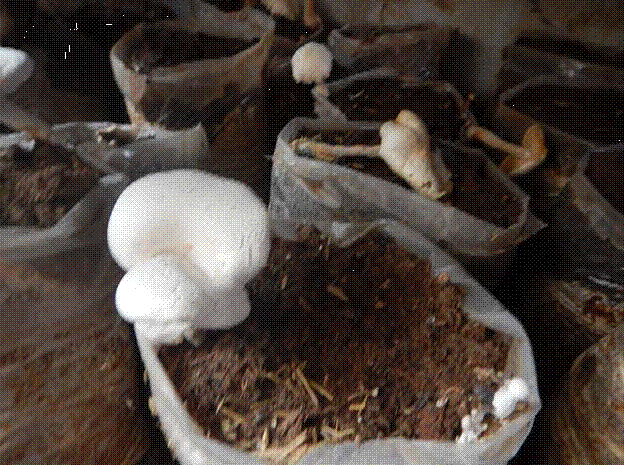
Used for cultivating Mushroom Pic ICIMOD
7. Industrial use for making Cardboard & papers. The straw can be used effectively and usefully in the production of cardboard and paper.
9. Finally, the straw can be used as fuel in Brick kilns and the combusion in these kilns can be monitored to prevent production of Black Carbon.
Marianne de Nazareth: Freelance Science and Environment Journalist, adjunct faculty St. Joseph's College of Media Studies and registered PhD scholar with the Madurai Kamaraj University)

